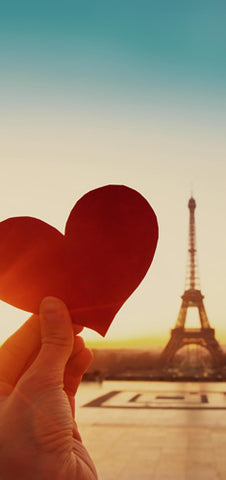Chenonceau first appears in historical documents around the 11th century. The Marques family was in possession of the chateau until the 15th century. Chenonceau's modern history begins around this time.
1411
A royal decree against the Marques family patriarch, Jean Marques, for an act of sedition, included an order for the destruction of the original manor at Chenonceau.
1432
Jean Marques builds a castle and a fortified mill to replace the lost manor of Chenonceau.
A short video tour of Chenonceau:
1513
Pierre Marques, the heir of Jean, up to his eyes in debt, sells the castle, which was readily purchased by Thomas Bohier, the General Tax Collector for the neighboring region of Normandy.
1515
Thomas Bohier razes all of the existing buildings at Chenonceau. He then orders construction of a third generation castle. Chenonceau's system of moats and the donjon are retained. The latter is modified to fit with the style of the new castle.
1521-22
The chapel is consecrated by Cardinal Bohier, a member of the Bohier clan.
Construction of the chateau is completed and the extensive gardens are laid out. The King of France, Francois I, is twice a visitor to the castle at this time.
1535
After Thomas Bohier’s death in 1524 (his wife passed away two years later) his son Antoine yielded the castle to the Crown to pay off the remaining debts incurred by Thomas.
The High Constable of Montmorency takes possession of the castle in the name of Francois I. The King ignores Chenonceau and focuses his efforts on building the massive Chambord castle.

1539
Charles Quint, Emperor of Germany, Prince of the Netherlands and King of Spain, the eternal rival of King Francois I, visits the castle of Chenonceau.
1547
Henry II's mistress, Diane of Poitiers, falls in love with Chenonceau. Diane is the widow of the Count of Brézé, the Grand Seneschal of France and is twenty years Henry's senior. Henry gives Diane the castle as a sign of his love. She officially takes ownership in 1555.
1551
While at Chenonceau, Diane is made the Duchess of Valentinois and becomes one of the most influential women in France. Her success assured her of many enemies, the most formidable of which was the Queen, Catherine de Medici, who envied her influence over the young King and the affairs of the France.
1552
Henry II and his court visit Diane at Chenonceau. The castle is a fully functioning estate at this point with Diane of Poitiers as it's ruler.
Numerous artists took up residence at Chenonceau during this period. The parties and events (balls, tilting at the ring, stag hunting) were never-ending and legend.
1555
As legal owner Diane embarks on an expansion of Chenonceau. The castle is enlarged to span the river Cher.
1559 King Henri II is fatally injured by Montgomery, the Captain of the Scottish guards, during a sporting event. His widow, the long simmering, Catherine de Medici, demands that Chenonceau be returned to the crown. Diane is banished to Chaumont. Chenonceau remains a vibrant estate under Catherine de Medici's rule.
King Henri II is fatally injured by Montgomery, the Captain of the Scottish guards, during a sporting event. His widow, the long simmering, Catherine de Medici, demands that Chenonceau be returned to the crown. Diane is banished to Chaumont. Chenonceau remains a vibrant estate under Catherine de Medici's rule.
1563
The gardens are transformed and redesigned under the guidance of Bernard Palissy.
1576
The grand courtyard is built.
1577
In May, the grand gallery of the castle is inaugurated. The reception with its songs, dances, and theater remains the climax of the golden era of Chenonceau.
1733
Claude Dupin, a squire descended from the Berry family, buys the castle of Chenonceau from the Duke of Bourbon.
Among the visitors to the chateau during this period are Voltaire, Fontenelle, Marivaux, Montesquieu, Buffon and Rousseau.
The Dupin's are much loved by the peasants of the region.

1913
Henri Menier, the grandson of the founder of the chocolate firm with the same name, buys the castle. The estate of Chenonceau has been in the Menier family since.
1914-1918
The chateau is converted to a military hospital for the duration of WWI.
1940-1942
The great flood of the Cher river in 1940 devastates the garden. It lies dormant until the 1950's
During the Nazi Occupation, a great number of people, Nazi and Free French, take advantage of the unusual situation at Chenonceau. The south side of the castle opened on to unoccupied France, while the entrance was in occupied France.
1951
The Menier family tasks Bernard Voisin with the job of restoring Chenonceau to it's former glory.
Over a period of years Voisin successfully reconditions the castle and its numerous outbuildings and restores the beauty of the gardens and the surrounding vineyards. Little by little, Chenonceau comes back to life.
2009
Today, Chenonceau has fully recovered its glory. With over 1.3 million visitors every year, and with the exception of the Palace of Versailles, it is the most visited castle in France.
Loire Valley Tours
We offer four options to tour the Loire Valley from Paris:
Three one-day trips from Paris.....
And, our new Loire Cycling tour: Five-day Loire Cycling Tour
All four tours include a stop at Chenonceau on most days.

